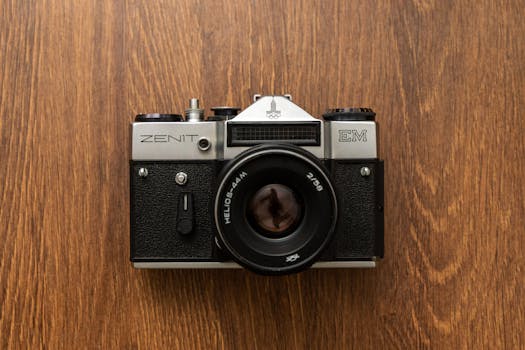Tutorials
Boost Your Performance: Adjusting Sensitivity in Mobile Games
Learn how to adjust controller sensitivity in mobile games to improve your performance. Tips for Android and iOS gamers.
Advertisement
Introduction
In a world where mobile gaming is booming, understanding how to adjust controller sensitivity is crucial to performance. Sensitivity is the key that can make the difference between a successful play and a frustrating defeat.
By optimizing touch and motion settings, players can improve game responsiveness, making their experiences more enjoyable and effective. This adjustment can be made on both Android and iOS devices.
In this article, we'll introduce practical methods for adjusting sensitivity, as well as provide valuable tips that will improve your gaming performance. This guide details steps that can be easily followed by any player, regardless of experience level.
Why Does Sensitivity Matter?
Adjusting the sensitivity of your controllers can directly impact performance. Response time and accuracy are crucial factors, especially in competitive games.
Players who adjust their sensitivity correctly can perform more precise and faster movements. This can change the course of a match, especially in challenging scenarios.
Additionally, a poorly calibrated controller can lead to frustration. Players may feel like their actions aren't being reciprocated, which can lead to discouragement during the game.
Understanding individual needs is crucial. Every player has a unique style, and adapting sensitivity can significantly optimize performance.
Sensitivity adjustments also impact the overall gaming experience. With the right sensitivity, the player feels more connected to the character and the virtual environment.
How to Access Sensitivity Settings
The first step to adjusting sensitivity is to access the game's settings. In many games, this can be found in the main menu or in the settings options.
For Android devices, open the game and look for an option called "Settings." Then, locate the "Controls" or "Sensitivity" section.
On iOS, the process is similar. Access the in-game options and look for the "Controls" menu. These settings are always available in updated versions of the games.
Once you've found the settings, start exploring the available options. Typically, you'll see separations between touch, movement, and aim sensitivity.
Finally, take your time testing each option. Finding the ideal sensitivity may take several attempts, but it's essential for effective performance.
Touch Sensitivity Adjustment
Adjusting touch sensitivity is crucial for games that rely on fast-paced actions. Properly adjusted settings allow players to make smooth, precise movements.
Start by reducing the sensitivity if you notice unwanted touches. This can help prevent errors during critical moments in the game. Too high a setting can result in a lack of control.
Gently experiment with different settings until you find the one that best suits your style. A lighter touch may be necessary for certain strategy games, while a firmer touch is ideal for action games.
Remember that practice is practically mandatory. The more you play with your new setup, the more comfortable you'll become, and this will reflect on your overall performance.
Finally, consider each game as unique. Ideal touch settings may vary from game to game, so experiment with different options until you find the best one for each game.
Motion Sensitivity Adjustment
Movement sensitivity is equally important, especially in shooters and action games. Adjustments can impact the speed and fluidity of the character's movements.
Try increasing movement sensitivity if you'd like a faster response when moving your character. A higher level can allow for more instantaneous reactions to threats or challenges.
On the other hand, too high a sensitivity can cause uncontrolled movements. This can be frustrating, especially in situations that require pinpoint precision.
Test in real-world game situations. This will give you a clear understanding of how the new sensitivity behaves in different scenarios.
Finally, don't hesitate to adjust based on the game's feedback. Each update can change the dynamics, so always be aware of how changes affect your performance.
Aim Sensitivity Adjustment
For games that involve aiming, sensitivity adjustment is crucial. Proper aim control can be the difference between a successful shot and a horrific miss.
If you're a strategic player, consider reducing your aim sensitivity to gain full control when targeting opponents. Precise movements are crucial in direct confrontations.
Can increasing sensitivity be beneficial? Yes, but for players who prefer fast-paced action, adjustments can be made to allow for a wider field of view.
Test your settings as you engage in combat. Notice how your aiming capabilities change and how you can adjust them as needed.
Finally, practice is always your ally. Take some time to practice with your new setup before jumping into a competitive game.
Testing Your Settings
After making your adjustments, the next step is to test them. Many games offer training or challenge modes where you can see how your new settings work in practice.
Participating in informal matches is also a great way to test your new sensibilities. This helps identify areas that still need adjustment.
Keep a record of your gaming settings and performance. This will allow you to compare and adjust as needed, always striving to maximize your experience.
Creating a cycle of continuous testing and adjustments is key to success. The gaming environment is always changing, and your settings should evolve with it.
Don't hesitate to seek feedback from friends. Sometimes, a second opinion can provide insights you might have missed.
Final Considerations on Sensitivity
Adjusting sensitivity is an ongoing process. As new games are released and your playstyles evolve, your preferences may change as well.
Chat with other players and join groups. Sharing experiences can enrich your understanding of ongoing gameplay tweaks and improvements.
Don't be afraid to experiment. Constant testing can lead to surprising discoveries that can enhance your gaming experience.
Remember the importance of comfort. Sensitivities that may feel great for one player may not work for another. Find what feels most comfortable for you.
Ultimately, practice is your best ally. The more comfortable you feel with your settings, the better your performance will be in any game.
Conclusion
Adjusting the sensitivity of game controls is essential for any player looking to improve their performance. Whether on Android or iOS, the tips provided will help you optimize your gaming experience.
Consider your personal preferences and playstyle. What works for one may not work for another, so customization is key to success.
Take the time to test and adjust your settings. Patience and practice will ensure you become a more skilled player.
By applying these strategies, you should notice a significant difference in your skills. This will make your matches more enjoyable and competitive.
Now, get out there and start adjusting your sensitivity. The world of mobile gaming is waiting to be conquered!





